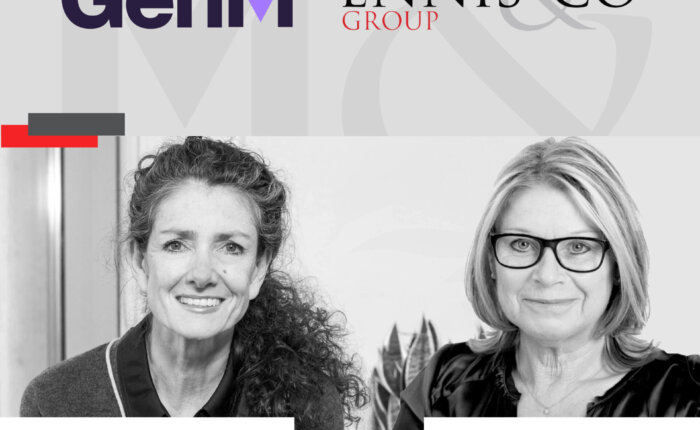‘Hell would freeze over before I would work for a woman,’ a senior motor industry executive told me recently.
At a time when corporations are shouting from the roof-tops about the need for more women and diversity on boards, in senior executive positions, and in the workforce generally, it was a brutally honest if very un-PC confession. But it was clearly a heart-felt, genuinely held, and refreshingly honest view. Though if made publicly rather than privately, it would spark outrage. However, it’s one that should be noted if any real change is to happen.
Read any newspaper, industry journal or even fashion magazine in print or online these days and you will hear lots about the need for ‘glass ceilings’ to be shattered and ‘glass walls’ that are holding back women and minorities to be broken down. The talk is being talked everywhere. But is there too much of it? Is the message being drowned out – and any real action being stifled – by too much chatter?
It strikes me that ‘diversity’ is turning into an industry of its own with all the hall-marks of those self-publicising self-help gurus who promise to change your life. But how much of it is smoke and mirrors?
Everyone seems to be at it. Over here we have actress Kate Blanchett promoting the ‘Si Women’s Circle’ – supported by Giorgio Armani’s ‘Si Le Parfum’ fragrance, which focuses on high profile women who have said ‘yes’ – or ‘si’ in Italian – to their aspirations and can ‘share’ their stories with women around the world.
Over there lawyer Miriam Gonzales, wife of former Liberal Deputy Prime Minister Nick Clegg, is involved in initiatives to empower and inspire women.
Grazia magazine recently ran a feature saying it’s no longer just about women breaking through the glass ceiling to the top jobs, now they must also break down the ‘glass walls’ that prevent women’s voices being properly heard in the workplace.
It’s all worthy stuff and no doubt genuinely aims to make a difference. But are so many people jumping onto the diversity bandwagon that the real message is being lost? Could it even become counter-productive with firms feeling that by signing up to one of these ever-growing female empowerment programmes they’ve duly ticked their diversity box, so can get back to feeling good about the day job of ‘business as usual’?
At the start of the summer one of the most powerful and influential women in the global motor industry, Ford of Europe’s chief operating officer Barb Samardzich, gave an inspirational speech at the launch in London of the ‘Great British Women’ in the car industry’s top 100 ‘power-list’, compiled by motoring magazine Autocar in conjunction with the UK’s Society of Motor Manufacturers’ and Traders (SMMT).
She spoke movingly to 100 of the UK’s most senior female automotive executives about her own rise up the corporate ladder, how confidence, love of her job and risk-taking had been essential to that rise, and how more must be done to ensure women have a bigger say in the higher echelons of the workplace.
The economic argument for more women in senior posts is compelling, she concluded, noting how the Harvard Business Review says companies with the best record for promoting women into senior positions are 69 per cent more profitable. Firms with senior female representation deliver 55 per cent higher earnings – and the global economy would be boosted by 26 per cent if women played an equal role to men in the work-force, according to McKinsey.
She concluded: ’Looked at through the cold, hard lens of economics, there is no debate to be had about the benefits of women working in our sector.
‘But as all of us aware, the diversity we aspire to and the equality we deserve, is not always apparent.
‘In business we remain a minority and in the engineering discipline that minority position is even starker.’
She called for more role-models. Within a fortnight, however, it became clear that this was her valedictory address as Ford announced she would be retiring, aged 57, from October 1 this year after a stellar 27 year career with the company.
Towards summer’s end a Female FTSE 100 report showed that although the percentage of women on FTSE 100 boards has this year increased to 26 per cent – and on FTSE 250 boards to 20.4 per cent – the rate of progress has actually slowed. The percentage of new appointments going to women over the past six months is just 24.7per cent – the lowest since September 2011 and well short of the 33per cent target set by the Women in Business review by former trade minister Lord Davies. Only 19.4 per cent of FTSE 100 executive committee members are women, with females holding only 10 per cent of operational roles on these committees. The work by academics at the Cranfield School of Management City University and Queen Mary University, London, also highlighted those doing well, and not so well.
But naming and shaming firms who fail to hit a quota is not the way forward.
There must be a pipeline of talent nurtured at the beginning of a career, so that when today’s stars, like Barb, leave the stage there is a steady and plentiful supply of talent flowing through to follow them.
Industry must not get fixated on targets and quotas, but concentrate on encouraging and developing that talent early. It is not enough simply to talk the talk, sign up to self-help gurus and tick the box on diversity, firms must follow through with real action.
Boards must also ask themselves: is there an inherent if unspoken bias in our business? Beyond the mantra of pious and platitudinous PC utterings, are attitudes to diversity really all they might be? If there’s a slowdown in female representation, there has to be a reason. And it probably lies within.
There are women out there who fit the bill. They increasingly reach short-lists. But they must be recognised for their skills, not to make up numbers. Promote them. Or wrap up warm for a hellishly icy freeze.





